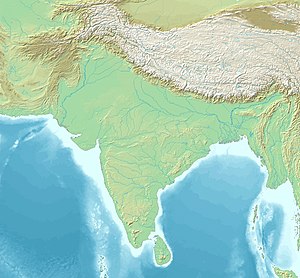| Major Pillar Edicts of Ashoka | |
|---|---|
 Major Pillar Edicts on the Delhi-Topra pillar. | |
| Material | Sandstone |
| Created | 3rd century BCE |
| Present location | Indian subcontinent, Afghanistan |
| Part of a series on the |
| Edicts of Ashoka |
|---|
The Major Pillar Edicts of Indian Emperor Ashoka refer to 7 separate major Edicts of Ashoka inscribed on columns (the Pillars of Ashoka), which are significantly detailed and are among the earliest dated inscriptions of any Indian monarch. An English translation of the Edicts was published by Romila Thapar.[1]
These edicts are preceded chronologically by the Minor Rock Edicts (11th year of his reign), Major Rock Edicts (12th year of his reign), and Minor pillar edicts (12th year of his reign) and constitute the most technically elegant of the inscriptions made by Ashoka. They were made at the end of the reign of Ashoka (during the 26th and 27th years of his reign), that is, from 237 to 236 BCE.[2] Chronologically they follow the fall of Seleucid power in Central Asia and the related rise of the Parthian Empire and the independent Greco-Bactrian Kingdom c. 250 BCE, and Hellenistic rulers are not mentioned anymore in these last edicts.
Edict No.7, the last Major Pillar Edict, appears exclusively on the Delhi-Topra pillar, and is testamental in nature, making a summary of the accomplishments of Ashoka during his life.
- ^ "Ashoka and the decline of the Mauryas" (PDF). Archived from the original (PDF) on 17 May 2017. Retrieved 10 July 2018.
- ^ Yailenko, Valeri P. (1990). "Les maximes delphiques d'Aï Khanoum et la formation de la doctrine du dhamma d'Asoka". Dialogues d'Histoire Ancienne (in French). 16: 239–256. doi:10.3406/dha.1990.1467.
© MMXXIII Rich X Search. We shall prevail. All rights reserved. Rich X Search

